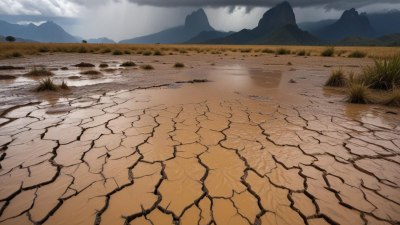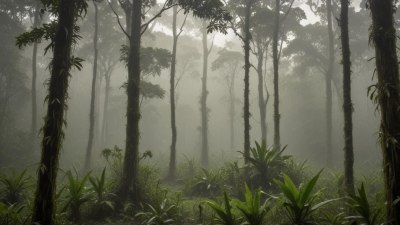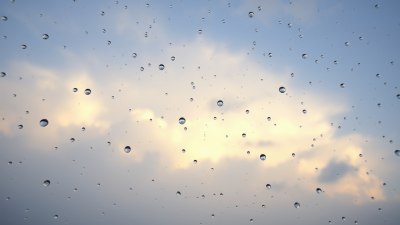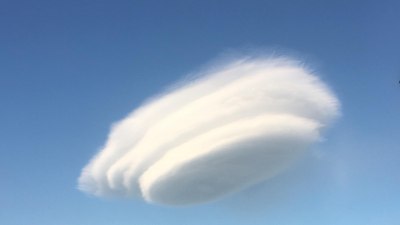The Truth About Why South America Has Both the Wettest and Driest Places on Earth
Explore the climatic extremes of South America, home to the world's driest and wettest places due to unique geographical factors.

This image was created with the assistance of Freepik
South America is a continent characterized by its stunning geographical diversity, ranging from sprawling deserts to lush rainforests. This unique environment has led to the existence of some of the wettest and driest places on Earth, with contrasting climates that can drastically affect the lives of those who inhabit these regions. In this article, we explore the scientific explanations behind these extremes, focusing on two specific locations: the Atacama Desert in Chile and the Amazon Rainforest.
The Atacama Desert: A Record of Dryness
The Atacama Desert, located in northern Chile, is known as the driest non-polar desert in the world. Certain weather stations in this region have recorded no rainfall for years, making it a geographical enigma. The reasons for this dry climate are multifactorial, centered on both atmospheric and geographical influences.
Firstly, the Atacama Desert sits on the eastern side of the Andes Mountains, which create a rain shadow effect. When moist winds from the Pacific Ocean blow inland, they rise over the Andes. As the air ascends, it cools and loses moisture in the form of rain on the windward side of the mountains. By the time these winds reach the Atacama, they are significantly drier. This phenomenon is a classic example of how topography can influence climate.
Secondly, the cold Humboldt Current runs along the coast of Chile, further reducing the amount of moisture in the air. This coastal current prevents evaporation from the ocean's surface, leading to fewer clouds and minimal rainfall. The combination of these factors creates a hyper-arid environment where environments are harsh and life is scarce.
Survivors of the Desert
Despite its harsh conditions, the Atacama Desert contains a remarkable array of life adapted to survive in extreme aridity. Flora and fauna have evolved unique traits, such as the ability to store water and withstand long periods without moisture. The Atacama is also home to various salt flats and unique geological formations, showcasing the diversity of life that can adapt to extreme environments.
One notable example is the flamingo, which finds sustenance in the area's saline lagoons. Another is various species of cacti, which have evolved water-storing capabilities. These survival strategies not only illustrate the resilience of life but also provide insights into how ecosystems adapt to climate extremes.
The Amazon Rainforest: A World of Moisture
On the opposite end of the spectrum, the Amazon Rainforest is renowned for being one of the wettest places on Earth. This vast expanse of lush greenery is fed by numerous rivers, including the mighty Amazon River itself, and relies heavily on the consistent rainfall that nourishes its ecosystem.
The Amazon experiences an average annual rainfall of about 2,300 millimeters (90.5 inches), with certain areas receiving even more. The factors contributing to this high level of precipitation include the forest's warm climate, high humidity, and the abundant evaporation from the vast expanse of foliage.
The dense tree canopy plays a significant role in the rainforest's hydrological cycle. Trees absorb moisture from the soil, which is then released back into the atmosphere through a process called transpiration. This, coupled with the high temperatures and humidity, creates a continuous cycle of moisture that leads to frequent rain showers.
The Intertropical Convergence Zone (ITCZ)
One of the key drivers of rainfall in the Amazon is the Intertropical Convergence Zone (ITCZ), which is a region near the equator where trade winds from both hemispheres meet. This zone shifts seasonally, influencing precipitation patterns in the Amazon Basin. During certain times of the year, the ITCZ moves south, bringing even more moisture and rainfall to the region.
Furthermore, the Amazon's geographical layout, characterized by its extensive river systems and floodplains, plays a significant role in maintaining its humid climate. The presence of water bodies allows for evaporation, contributing to local humidity and precipitation.
Climatic Extremes and Their Impact
The contrasting climates of the Atacama Desert and the Amazon Rainforest underscore the complexity of Earth's climatic systems. These extremes offer insight into how geographical and atmospheric conditions interact to create diverse ecosystems. The survival of organisms in these climates illustrates the adaptability of life and the critical importance of preserving these unique environments.
As climate change continues to affect global weather patterns, understanding these extremes becomes increasingly essential. Areas like the Atacama may become even drier, while rainfall patterns in the Amazon could shift significantly. Such changes can have profound implications on biodiversity, local economies, and global climate systems.
In conclusion, the presence of both the wettest and driest places on Earth within South America highlights the continent's extraordinary environmental diversity. The Atacama Desert and the Amazon Rainforest show how interconnected climatic and geographical factors lead to such stark contrasts.
By studying these extremes, we can better appreciate the complexities of Earth’s systems and foster a greater understanding of the importance of preserving our planet’s diverse ecosystems. As we continue to confront the challenges posed by climate change, the lessons learned from these unique regions will be vital in guiding efforts to protect and maintain our planet's health and biodiversity.











